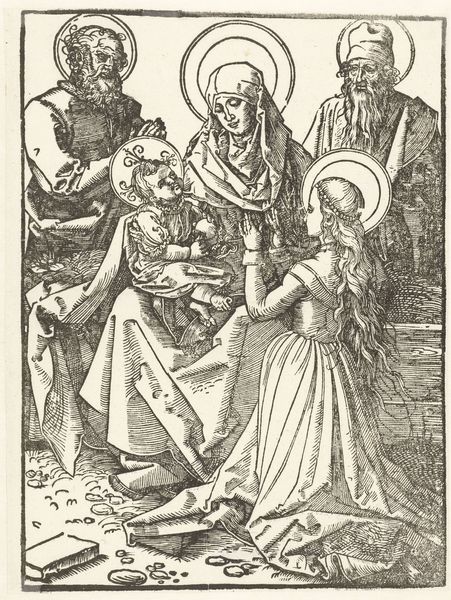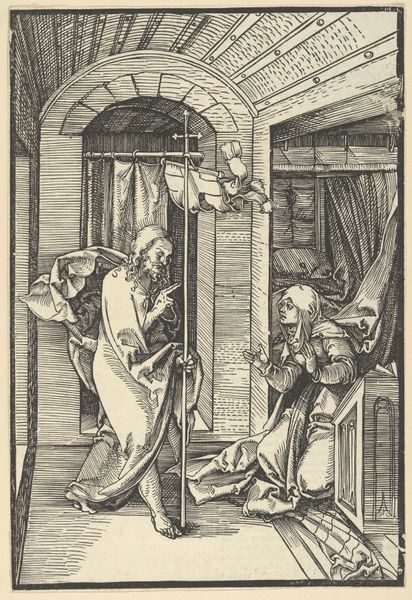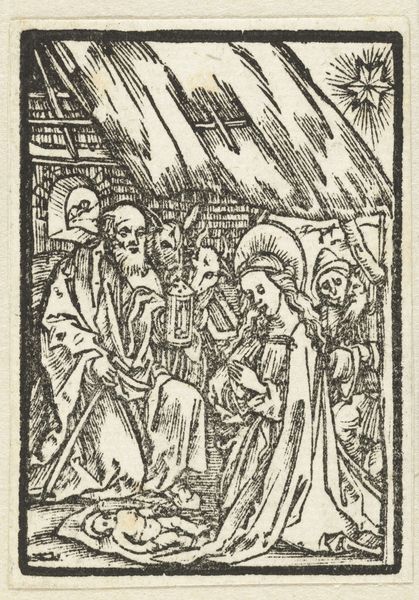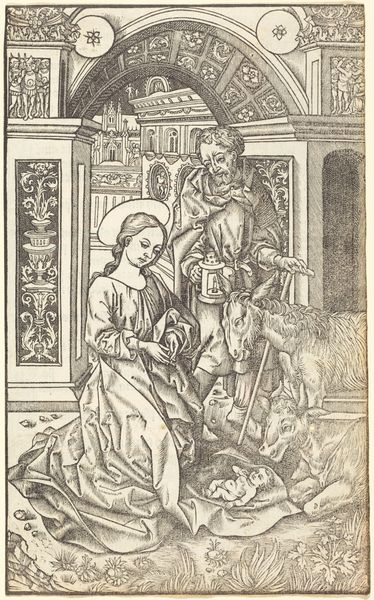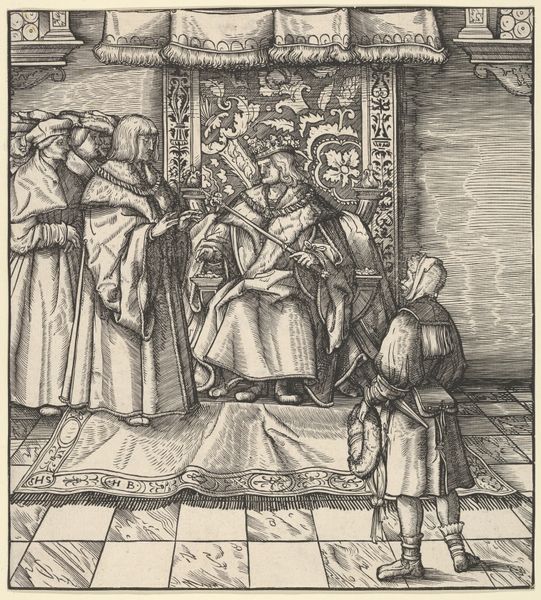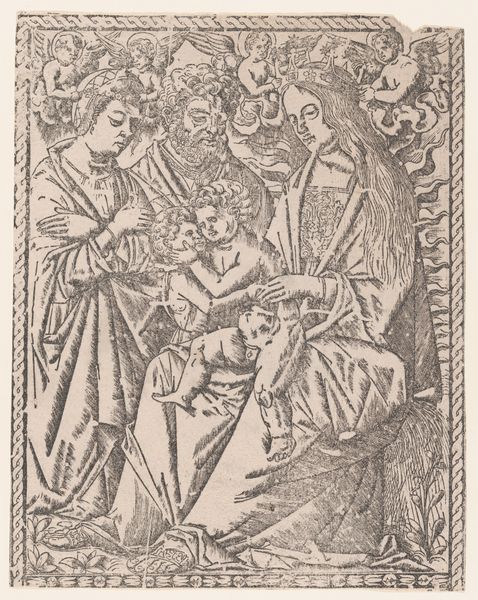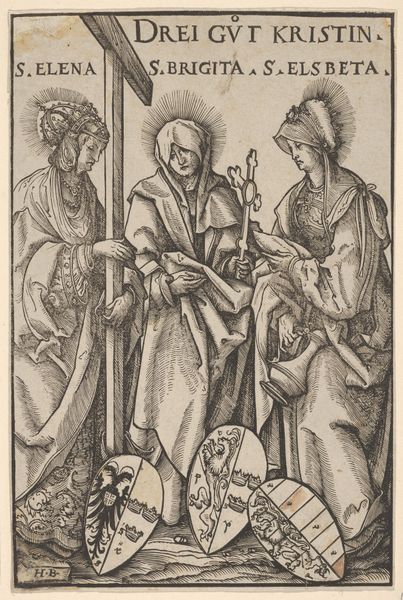
print, woodcut
#
medieval
#
narrative-art
# print
#
figuration
#
line art
#
woodcut
#
line
Copyright: National Gallery of Art: CC0 1.0
Curator: This woodcut print illustrates the Flight to Egypt, a common subject in medieval art. Its anonymous creator captures a pivotal scene from the New Testament. Editor: It has a wonderfully unsettling feel. The high-contrast lines create an almost stark landscape, a direct emotional feel—and then there is Mary. Is it maternal tenderness in her face or fearful trepidation? Curator: Let’s look closer at the broader social context. During the medieval period, these prints played an essential role in disseminating religious stories. For a largely illiterate population, the vivid imagery helped reinforce the Church's teachings, making accessible powerful narratives. Editor: I immediately find myself wondering about the artist. Printmaking afforded an opportunity to distribute images more widely. While it's unsigned, who might this anonymous individual be and what choices did they make about representation, knowing their audience? The image contains powerful political symbolism and raises complex issues of identity, flight, refuge, and seeking safety in another land. Curator: Absolutely. Woodcuts were a relatively affordable medium, and these could be distributed more easily than paintings, broadening engagement. I find it curious the anonymous nature might give them further freedom to express through image, away from institutional constraints. It provided opportunities for those without formal artistic training to make a contribution. Editor: It definitely urges reflection on broader social and historical issues; these stories transcend their specific context to question cultural attitudes about forced migration. The family's plight surely resonated with many ordinary people—and maybe today still can give new form and visuality to forced movement, to border crossing, to exile. Curator: A vital point. Studying this work through its materiality and widespread dissemination is powerful, in that it shows the mechanics behind belief. It speaks volumes about the relationship between art, society, and power structures. Editor: And when examining the figures, what narratives and cultural experiences might shape their portrayals? Are there indications of the creator's own affiliations? And finally, how does this print function within our contemporary world, its meanings evolving alongside ongoing societal change and new critical discourse? Curator: This has broadened my awareness. The history behind these woodcuts helps us comprehend how art has played a role in not just religion but culture, society, and how stories get retold or reshaped with new context. Editor: Seeing it in context encourages a critical discussion and prompts reflections about faith, but also, power, privilege, marginality, resistance, and agency, and how they might show up, here and elsewhere.
Comments
No comments
Be the first to comment and join the conversation on the ultimate creative platform.
